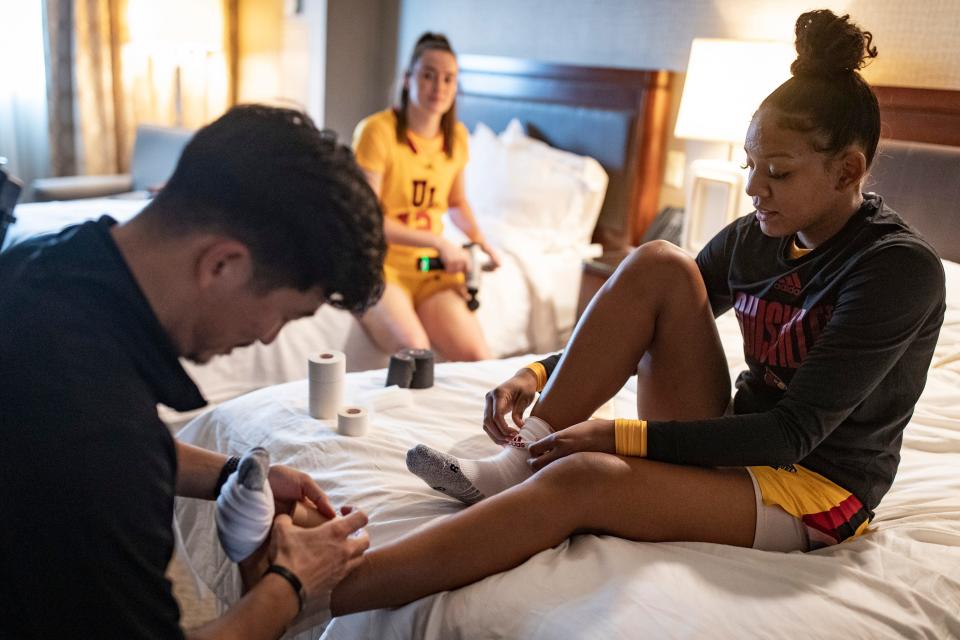Why aren’t athletic trainers mandated to be a part of any high school athletic staff
Currently in the United States, there are over 20,000 public and private high schools, and of this number, it is estimated that over 7 million students participate on sports teams. More than 1.4 million student-athletes ages 14 - 18 will experience some type of sport-related injuries each year. So, the question bears to be asked – who is the healthcare practitioner that is on-site to take care of these injuries?
Who is onsite to care for student athlete injuries?
The increasing trend across the U.S. is the licensed/certified athletic trainer. According to the 2019-2020 KSI Athletic Training Locations Services report approximately 67% of all high schools have some degree of access to an athletic trainer. It is important to note that this number is an estimate and the percentage of high schools that responded to the survey was only 52%. With that understanding it is reasonable to guess that many student-athletes do not have access to athletic trainers or any type of healthcare.
The National Athletic Trainers Association have long been an ardent supporter of getting athletic trainers hired in the secondary school setting. In a study that looked at athletic training employment in secondary schools by geographic setting and school size, this study indicated that approximately 80.1% of suburban schools have access to the services of an athletic trainer and are 3-4 times more likely to have such services than a rural school.
When considering some of the more catastrophic injuries that occur in sports, sudden cardiac death and exertional heat stroke stand out as two specific injuries that have a much higher survival rate if treated within 30 minutes of onset. In a report by Maron et al looking at sudden deaths in young competitive athletes from 1980 – 2006, there were 1855 incidents.
In a report released by the KSI in 2018, their findings indicated that 46 high school athletes died from heat-related illness between 1995-2015. Athletic trainers are educated and trained to deal with each of these catastrophic injuries as part of their education. We only have to reflect back on the Damar Hamlin case earlier this year to see just how efficiently and effectively the athletic training staffs from the Buffalo Bills and Cincinnati Bengals handled this death scenario. Regarding exertional heat stroke, survival rates are 100% when victims are treated within a 30 minute window and using appropriate protocols.
SAFER SIDELINES: The Courier Journal spent several months investigating sudden death in high school sports. Here’s what we found.

So, the question of the day is “Why aren’t athletic trainers mandated to be a part of any high school athletic staff?” The investigation by Mazerolle et al indicates that many high schools’ athletic directors state that they do not have the authority to hire such individuals and those directives must come from their respective school board. Other athletic directors cite a lack of a sufficient budget to hire additional staff. When considering that the average starting salary for an entry-level athletic trainer is in the $50-60,000 (NATA Salary Survey), one has to wonder how the life of child would rest on the hiring of a qualified “on site” healthcare provider at the same rate as an assistant sport coach.
More: An athletic trainer saved my life as a teen. Student athletes don't have to die
The situation in Kentucky is especially dire
As exemplified in the state of Kentucky, there will be a critical shortage of physicians in the state. “The situation in Kentucky is especially dire. The current supply of Kentucky physicians lags behind the national median, with a ratio of physicians per population of 228/100,000 versus 257/100,000 nationally. Much of the shortage is in rural Kentucky, made up of areas historically more difficult for physician recruitment.” This shortage can be addressed by the inclusion of licensed athletic trainers being hired at high schools in these rural areas.
Due to physician shortages across the nation, other healthcare providers can often fill the void. Licensed athletic trainers at a high school often may be the only healthcare provider these student-athletes have an opportunity to see for their general health issues. The athletic trainer can diagnose health conditions and then make a determination as to whether a physician is needed for further evaluation or if self-treatment is appropriate. With the addition of a full-time athletic trainer to the school staff, these individuals can not only provide much needed critical care for the injured athlete, but also provide much needed primary care services to the entire school community.
The need for any institution to have on staff a healthcare provider who can not only manage general health care issues, but also manage catastrophic incidents can be viewed as a “win-win” for the athletes and the school community.

Dr. Bud Cooper, LAT, ATC, CSCS. Clinical Professor, University of Georgia. Cooper is a national authority on Exertional Heat Illness prevention and has authored numerous publications on the topic of EHI prevention and treatment. Cooper received the "2023 Research in Excellence Award" from the University of Georgia. Cooper has lectured both nationally and internationally on this topic. His research has been funded by the National Collegiate Athletic Association, National Athletic Trainers Association and the National Federation of High Schools.
This article originally appeared on Louisville Courier Journal: High schools need athletic trainers. Why aren’t they on school staff?

